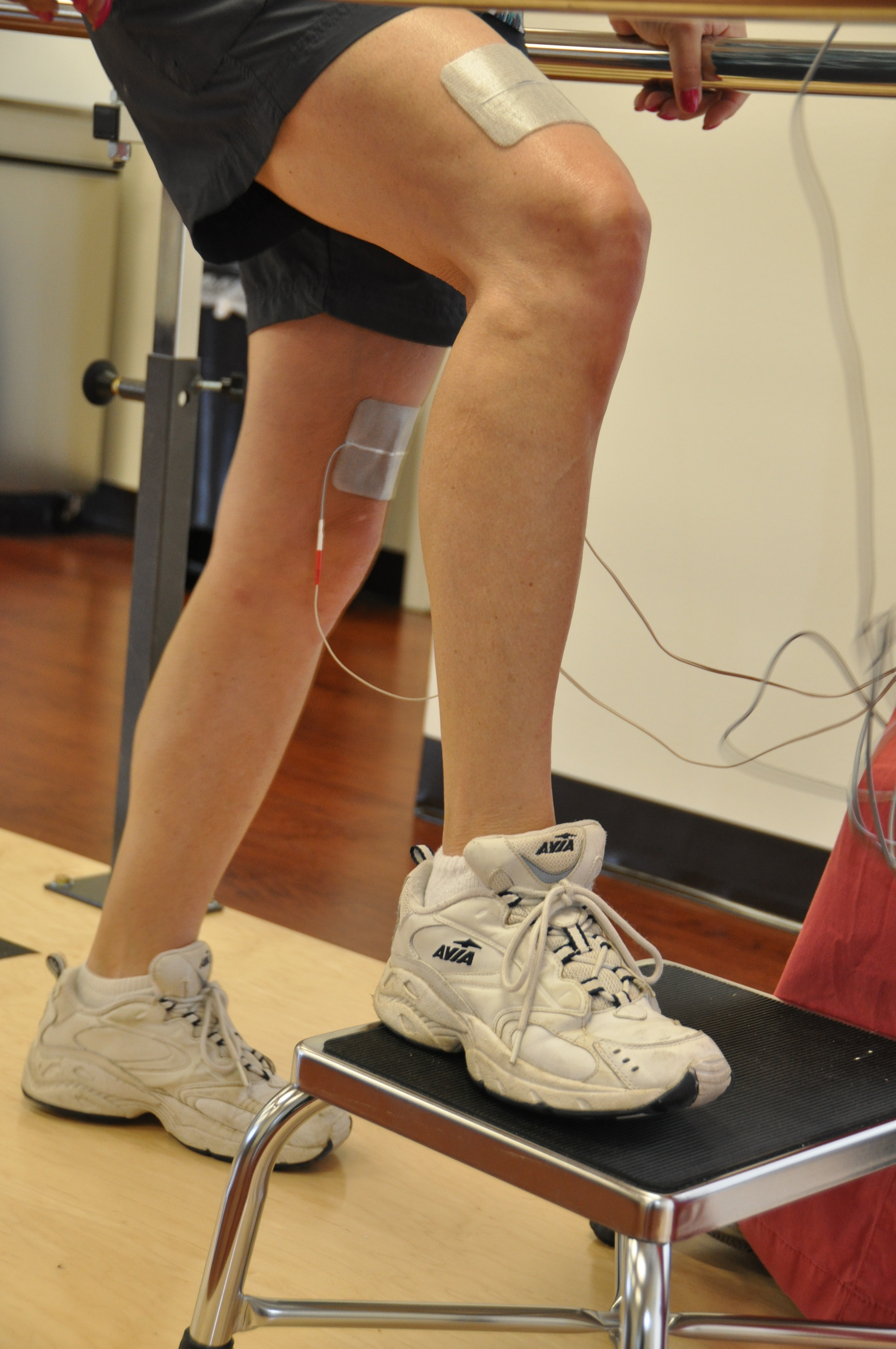Under the guidance of Dr. Daniel Becker the physical and occupational therapists here at the International Neurorehabilitation Institute (INI) use the principles of Activity-Based Restoratiive Therapy (ABRT) to promote neurological recovery by stimulating the nervous system above and below the level of injury through intensive activity. Our therapists use many different techniques to achieve stimulation of the nervous system, one of which is the use of functional electrical stimulation (FES).
FES is the use of electrical stimulation to elicit a muscle contraction in a weak or paralyzed muscle. This contraction is simultaneously combined with a functional activity where the targeted muscle is typically activated. In other words, just placing electrical stimulation on a muscle is not FES. The goal of FES is to pair electrical stimulation with activity and the person’s volition in order to promote nervous system repair and recovery.
You may have heard of Transcutaneous Electrical Nerve Stimulation (TENS). TENS and FES are similar in that both use electrodes on the skin to provide electrical stimulation to a desired location on the body; however, the settings and purpose are quite different. TENS is used to stimulate sensory nerves and is most often used to reduce pain and muscle stiffness/tone. This type of stimulation is often used in orthopedic clinics. FES stimulates the motor nerves with the goal of achieving a muscle contraction. Another major difference is that FES pairs the stimulation with a functional activity. Many TENS units are unable to be used for FES.
There are numerous benefits of using FES on a weak or paralyzed muscle. Research shows that FES can:
- Increase blood flow
- Increase muscle bulk
- Increase the recruitment of muscle fibers utilized for a movement
- Promote nervous system recovery within the spinal cord
- Increase bone density when paired with weight-bearing activities
- Reduce spasticity
At INI, your therapist will complete a detailed assessment of your strength and function during your initial evaluation and determine if you would benefit from the use of FES. If appropriate and medically cleared by your physician, your therapist will provide you with education regarding the benefits and precautions of using electrical stimulation. If your consent is provided, the therapists will trial electrical stimulation on appropriate muscles to determine the settings that are necessary for the desired response and comfort. Your therapist is looking for a strong muscle contraction without pain. People have varying tolerance for electrical stimulation, but there are three important points to note:
- There are many different settings that can be trialed to maximize your comfort
- Most people become accustomed to the sensation of the stimulation and can gradually tolerate more intensity over time. The quality of the muscle contraction also typically increases after training.
FES can be incorporated into many different activities. Below are some examples that you might see in therapy at INI:
- FES Cycling or also known as “Fes Bike”: One way that we use FES at INI is through arm or leg FES cycling. FES cycling involves patterned stimulation of the muscles responsible for the cycling motion. Your therapist will choose the muscle groups to stimulate based on your evaluation results. FES cycling can even be used to strengthen grasp! At INI, we are able to stimulate up to 12 muscle groups at one time. FES cycling can be a very efficient way to exercise.
- FES Standing: While standing in a standing frame, parallel bars, or with the assistance of a therapist, leg and trunk muscles that are typically used during standing are stimulated.
- Grasp and Release: FES can be used to strengthen hand and forearm muscles that are used for grasping and releasing objects. These muscles are simultaneously stimulated during the patterned movement of repeatedly grasping for objects and releasing them into a container.
- Core Strengthening: FES can be applied to core muscles on the abdomen and back, which is then paired with sitting balance activities and posture exercises.

Functional electrical stimulation assisted stepping
There are many FES exercises that a person can do at home, either independently or with the assistance of a friend or caregiver. Throughout your bout of therapy, your therapists are considering the exercises and equipment that are suitable for use at home. Our therapists work with Dr. Becker and your insurance company to help obtain FES equipment to use as part of a custom home-based rehabilitation program. This equipment often includes a hand-help electrical stimulation unit and/or an FES cycle. Our patients are encouraged to regularly follow-up at INI for continued therapy and updates to an FES program to maximize the benefit.
